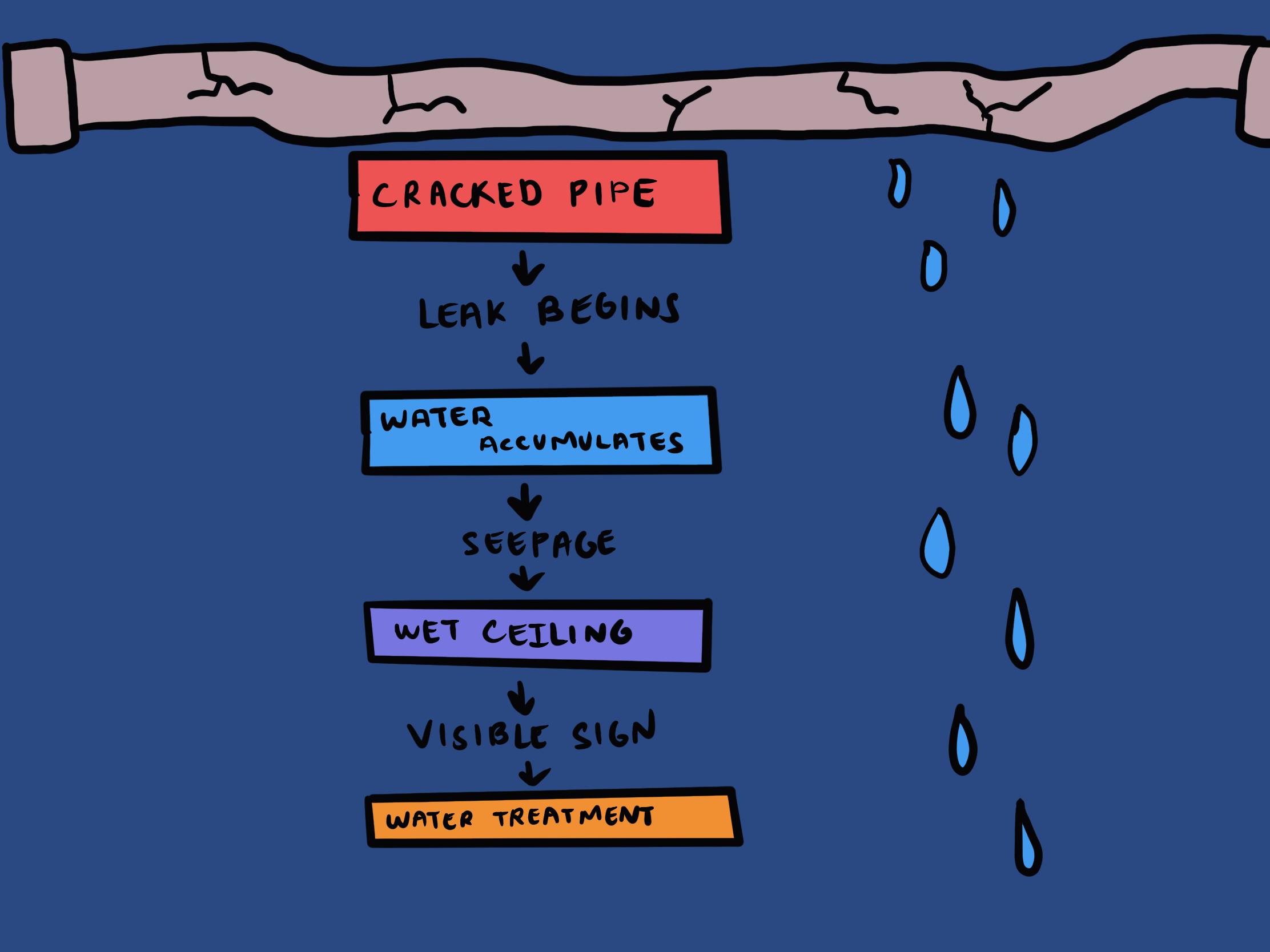Root Cause Analysis
What is Root Cause Analysis?
Root cause analysis is a problem-solving method used to identify the underlying causes of an issue or failure rather than just addressing its symptoms. By systematically investigating a problem, RCA aims to uncover the primary factors contributing to the issue at hand, helping organizations implement long-term solutions and prevent recurrence.

The Basic Idea
Imagine you notice water on your floor, dripping from a crack in the ceiling. You could place a bucket under the drip to stop it from damaging your floor as an immediate fix, but that wouldn’t solve the problem. Even patching up the crack in the ceiling with putty wouldn’t permanently fix the issue, as the water would eventually break through the putty again, leaving you with the same slippery situation as before. To fully address the problem, you would need to take a closer look at the pipes and analyze the damage. Through this investigation, you discover a crack in one of your pipes, and now you can fix it.
In this analogy, the water dripping is the symptom of the problem and the cracked pipe is the root cause. Root cause analysis is the process of identifying problems, then conducting research and collecting data to pinpoint their root cause.
Root cause analysis is a quality management process used by organizations to identify corrective actions that will have long-term effects. Instead of taking the issue at face value, root cause analysis is based on the premise that there is often a lot more going on behind the scenes. Root cause analysis is focused on uncovering the “why” and “how,” rather than the “what” (the symptom).1
Here are the basic steps to conduct a root cause analysis:
- Define the problem
- Collect data
- Identify the causal chain between a symptom and root cause
- Implement solutions to address root cause2
For example, imagine you are the CEO of a company that sells medical equipment. You learn that in the past quarter, multiple sales representatives did not meet their monthly quota (defining the problem). A less experienced CEO might conclude that those sales representatives are not putting enough effort into their work and consider firing them. However, as the savvy CEO that you are, you believe there might be more to the situation than meets the eye. You take some time to conduct research and notice that all of these sales representatives joined the team around the same time six months ago (collecting data). That pattern may indicate that their onboarding process did not adequately prepare them for success (mapping out events that led to the symptom). Armed with this knowledge, you can address the root cause and adapt the onboarding process for greater success (implementing solutions). Voila, now your sales representatives are meeting their monthly quotas and you are making more money!
“Address the root cause and, in so doing, not just reduce the symptom seen in this instance, but improve the overall system...”
— John Hunter, author of Management Matters: Building Enterprise Capability3
About the Author
Emilie Rose Jones
Emilie currently works in Marketing & Communications for a non-profit organization based in Toronto, Ontario. She completed her Masters of English Literature at UBC in 2021, where she focused on Indigenous and Canadian Literature. Emilie has a passion for writing and behavioural psychology and is always looking for opportunities to make knowledge more accessible.



















